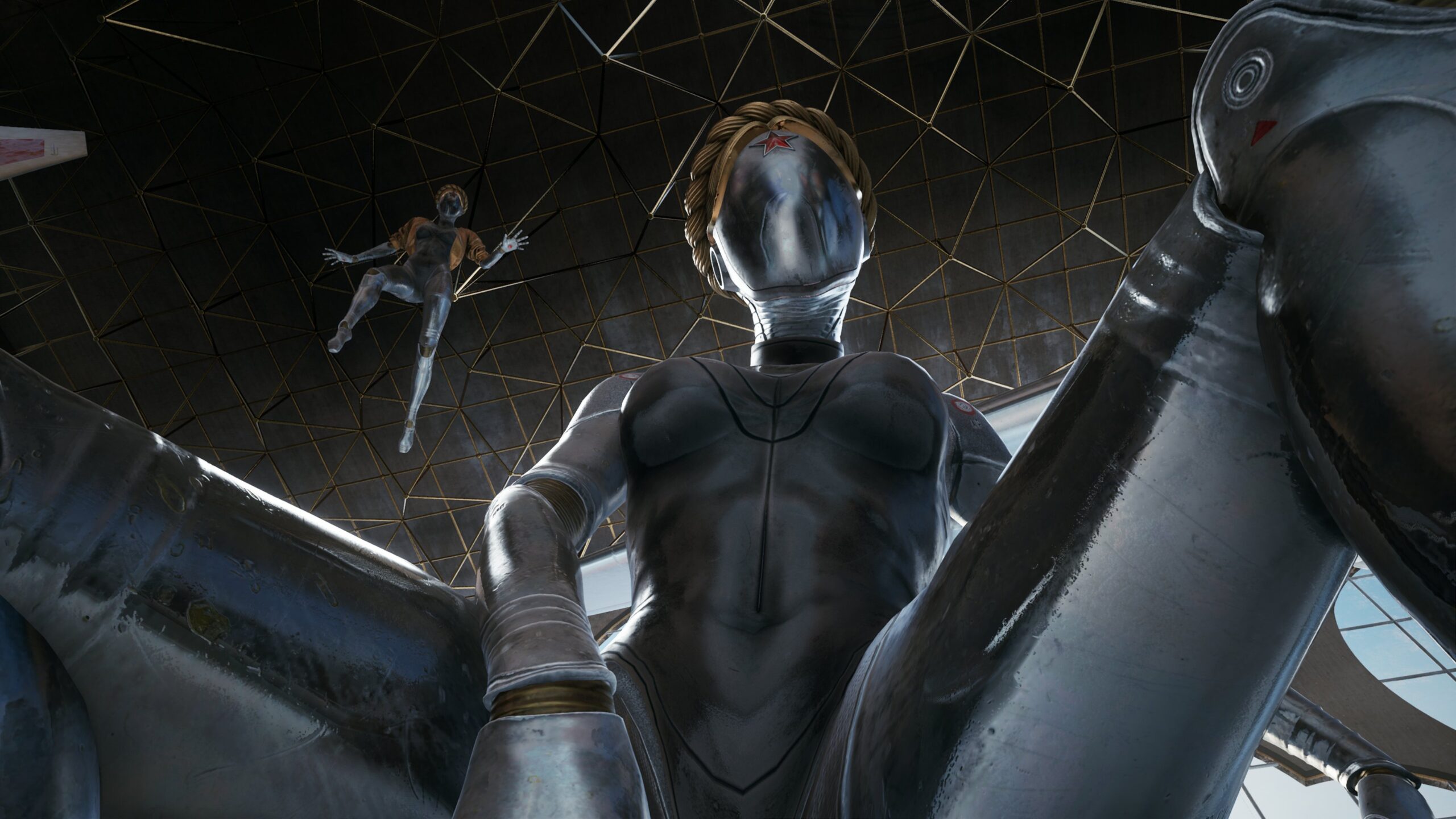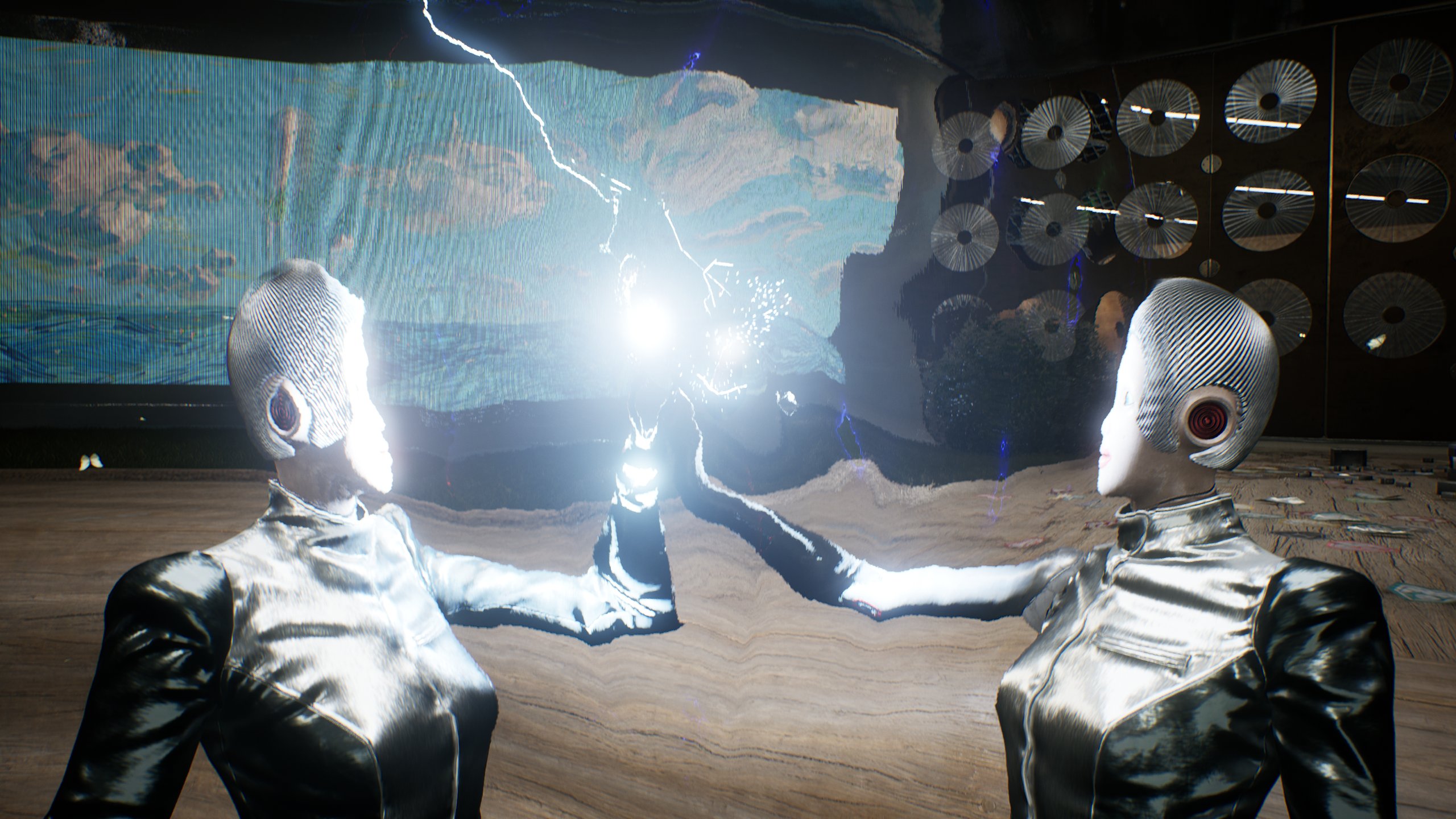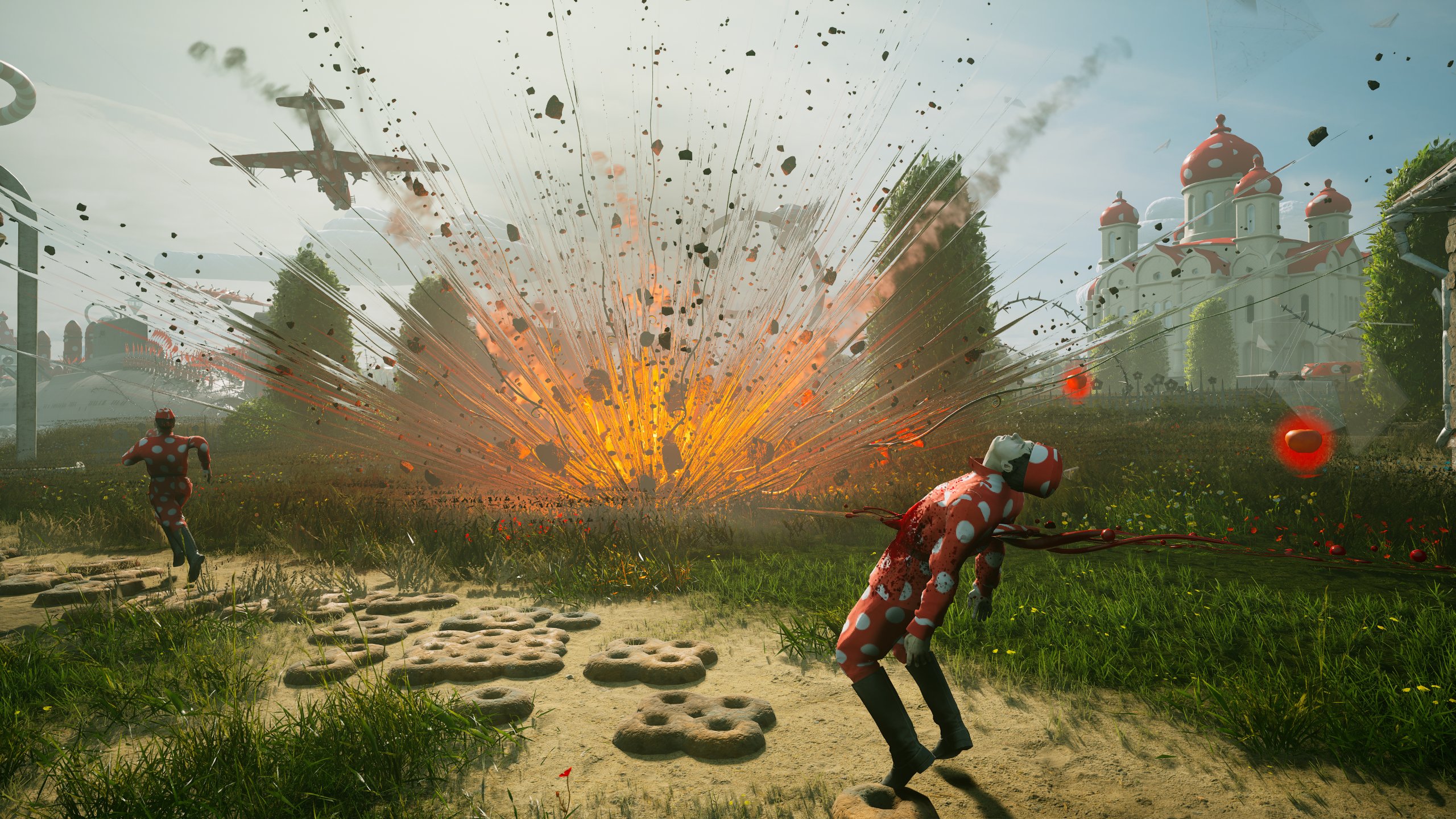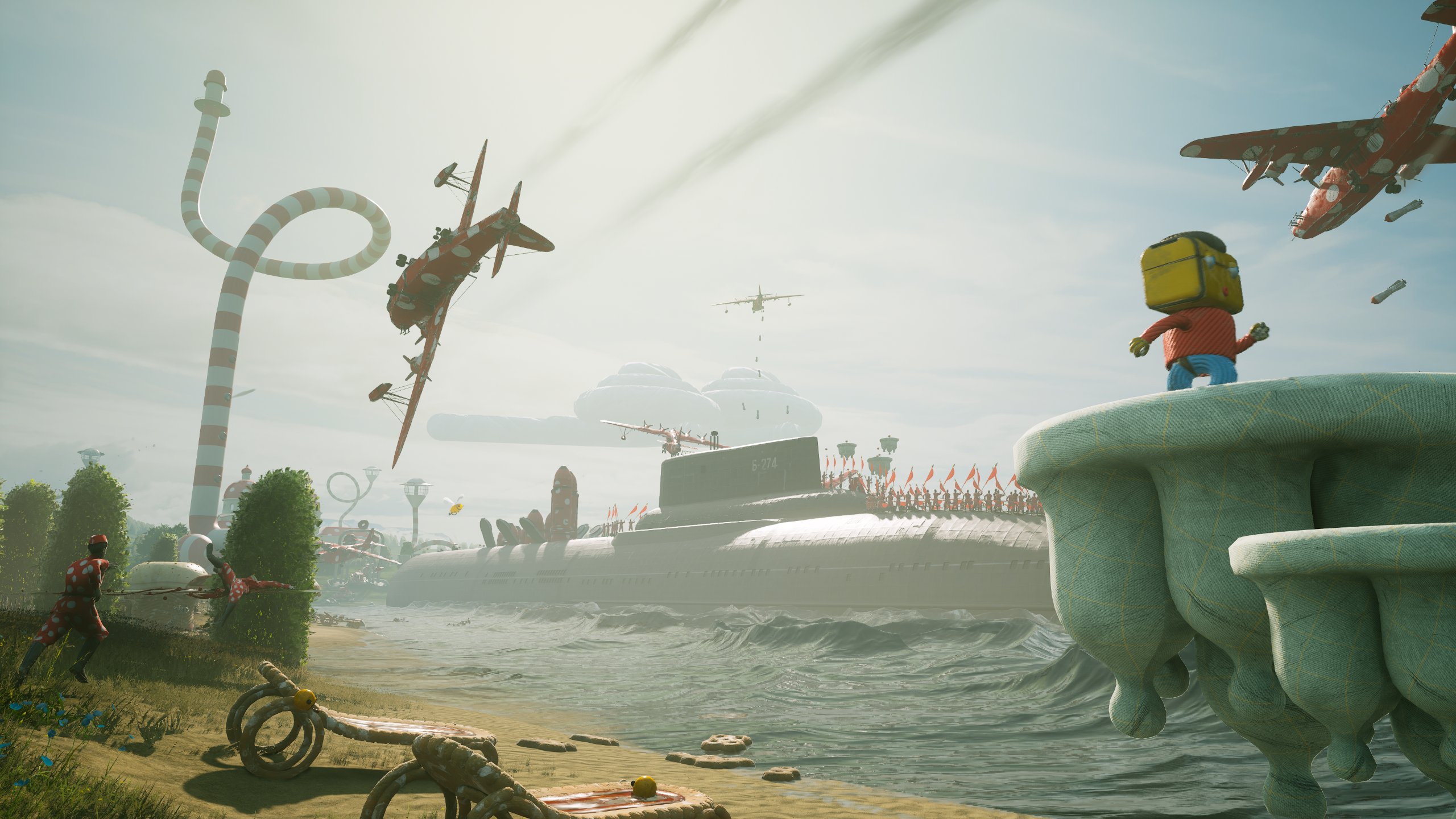World War II has ended, but in an alternate time where Russian ingenuity and perseverance defeated the axis. With all of the spoils of war going to the Soviets, they experience a renaissance of growth never seen before. The communist nation has become the world’s biggest superpower with the help of advanced robotics and the invention of a flexible polymer with endless possibilities.
Atomic Heart is an open-ended first-person shooter with RPG elements inspired by the “fallen utopia” premise Bioshock perfected in 2007. The developers of Atomic Heart understood what was essential to Bioshock‘s story; no matter what system is used to run a society, no man is a paragon and can’t be trusted to rule.
Morality is the flaw of man and Atomic Heart shows that despite our accomplishments, our greatest wonders will still come crashing down. Having powerful themes in the scenario can create a rich experience, but how does the gameplay hold up? Can the combat and puzzles match the artistic splendor? Find out in this Atomic Heart review!
Atomic Heart
Developer: Mundfish
Publisher: Focus Entertainment, 4Divinity
Platforms: Windows PC, Xbox One, Xbox Series X|S (reviewed), PlayStation 4, PlayStation 5
Release Date: February 21, 2023
Players: 1
Price: $59.99 USD

Atomic Heart aspires to be an “immersive sim”, but it does not commit to the premise. Traditionally, immersive sim-like games involve heavy role-playing elements, granular details, and persistent logic that all systems abide by. Usually, this revolves around making a choice and having to live with the consequences.
Gamers are not going to get an immersive sim experience with Atomic Heart, but that does not mean it isn’t a lot of fun. What it lacks in persistent systems, it more than makes up for creativity and variety. Atomic Heart is a beefy and expansive first-person action game with some minor RPG elements.
Environments are sprawling labyrinths with locked doors and puzzles to solve. The puzzles come in many forms and abide by “test chamber” rules; the kind seen in the shrines in Breath of the Wild. A lot of the time Sergey will have to rely on telekineses and at other times he may have to hit switches in a sequence or figure out a combination of various elements.

Atomic Heart is more Bioshock Infinite than System Shock 2 or Prey (2017), but it has more depth than the former while having better playability than the latter.
Despite billing itself as a first-person shooter, the protagonist is adept with powers and has plenty of melee weapons to choose from. Guns are not as common as one would expect and the way battles unfold, leaning on the effects of the polymer glove is more reliable than any sidearm.
Charles the glove is a major aspect of Atomic Heart‘s identity and the story revolves around it. More than a weapon, it is also a character in the strange plot.
Players assume the role of Major Sergey Nechaev, a soviet experimental soldier who is decked out with advanced implants and has a really funny catchphrase. Sergey finds himself caught in a robot uprising and must stop the usurping mechanical menace from toppling the motherland.

The story seems simple at first, but there is more going under the surface. Cheeky foreshadowing is hinted at throughout the game and the impressive symbolism in the imagery shows that the boys at Mundfish understand the substance of the themes they are dealing with.
It is no coincidence that the story is about a powerful communist nation that exploits worker robots, only for the robots to turn on their masters. Even the nature of propaganda as an illusion is explored thoughtfully by the lovable meathead, Sergey.
Atomic Heart is also surprisingly very sexually charged for a swashbuckling action game. There are hints of sexuality everywhere, some obvious and others so subtle that almost nobody would notice. Other times it is used for comedic effects, like the refrigerator that does the upgrading, but also sexually harasses the player.

Atomic Heart does have a slow-paced first few hours, but it is all worth it for the fluid and violent telekineses battles and swift-footed melee scraps. There is always something new being thrown at the player every few hours and this prevents the game from becoming stale.
It would have been easy to let players fall into a sense of complacency with the linear game flow, but then Atomic Heart blindsides gamers with a large open environment after hours of trying to survive in a science facility.
The big game world is stuffed with useful collectibles, side dungeons, and all kinds of fascinating world-building set-pieces. The only drawback is that it does admittedly drag the pace of the story.

The biggest mistake in Atomic Heart is the lack of a new game plus. There are a lot of abilities to gain and weapons to upgrade that it is not feasible to get everything in one play through. This is especially a problem for the late-game weapons that will hardly see any use. Thankfully, respec options are available, but there is no way to ever max out everything.
Atomic Heart is an impressive first game from a new studio. It has lavish production values and a really good soundtrack that utilizes real Russian hits. The sense of humor in the game is a highlight that makes it stand out from other shooters in the market and the gameplay that shifts from high-octane combat to cheeky puzzles is stimulating.
Atomic Heart was reviewed on Xbox Series S using a copy purchased by Niche Gamer. You can find additional information about Niche Gamer’s review/ethics policy here. Atomic Heart is now available for Windows PC (via Steam), Xbox One, Xbox Series X|S, PlayStation 4, and PlayStation 5.
